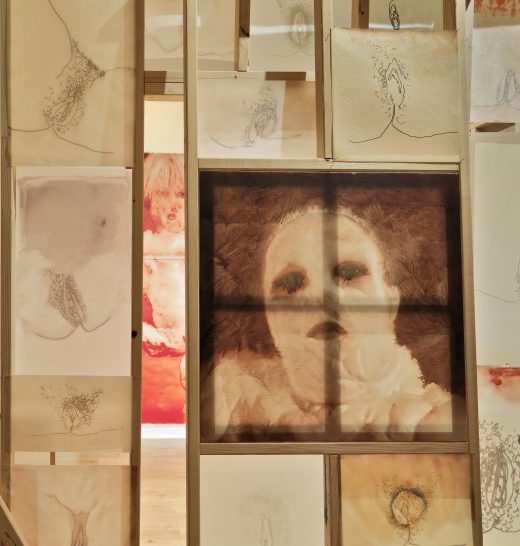Ida Applebroog

“And what is your name?” she wrote in 1969. “In dreams it’s Ida Applebroog.” Born Ida Applebaum in the Bronx in 1929 to immigrant parents from Poland, renaming herself was, in part, about forgetting painful memories of her rigid upbringing. It was also an act of resistance, a refusal to be defined by the roles of wife and mother. And yet it was not a complete rejection of her past. Swapping one ending for another, she was, at her core, still an apple. Like this subtle but significant shift in her identity, Applebroog’s work constructs a dialogue between past and present versions of herself.
After attending the New York State Institute of Applied Arts and Sciences, Applebroog moved to Chicago in 1956, later attending SAIC. She and her family then relocated to San Diego, and in 1973 she returned to New York, where she continues to live and work. Applebroog is a self-proclaimed “image scavenger” and prolific drawer, her career spans five decades and numerous media, from artist’s books to sculpture to puppets to videos and installations. Her work is mostly figurative, with characters that are cartoonish, androgynous, and often grotesque. Images interplay with text, sometimes boldly stenciled, sometimes scrawled in cursive. Applebroog avoided computers until she was 75, when she recognized the appeal of digital imaging and retouching, using these tools to breathe new life into her earlier works.
Many of Applebroog’s newer projects have reopened previously unfinished or unknown bodies of work. In 2009, her studio assistants found a box labeled “Mercy Hospital,” which contained drawings from her time as a psychiatric patient in 1969 following a catastrophic breakdown after moving to California. Applebroog describes looking at old work—whether from her childhood or her forties—like reading something “from a stranger.” Intensely shy as a young person, nonagenarian Applebroog takes her diary fragments (You are the patient, I am the real person.) and enlarges them to fit gallery walls. Her private thoughts, made public, give voice to what she calls “our collective anxieties.”
Applebroog’s recent work explores the relationship between beauty, sexuality, and aging. Monalisa began in 1969, when she found solace from the demands of marriage and motherhood in the bathroom, where she made drawings of her own vagina from a full-length mirror. The artist remade these drawings as digital prints in 2010. For Applebroog, remaking is not rehashing. It’s an opportunity not only to resuscitate old figures but to update them, to give them voices that speak to new audiences, including who she herself has become. As art historian Jo Applin has argued, by remaking her images, Applebroog refuses to “let them settle as evidence of a feminism or self past.” Instead, her remade drawings present “evidence of practice, of a practicing body, that continues to work.” Weaving together the past and the present, she collapses the distinction between the two.
